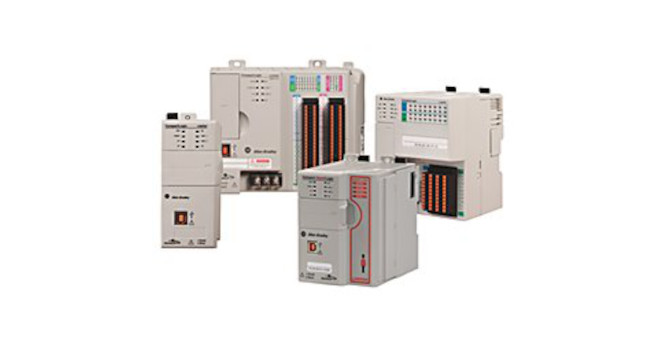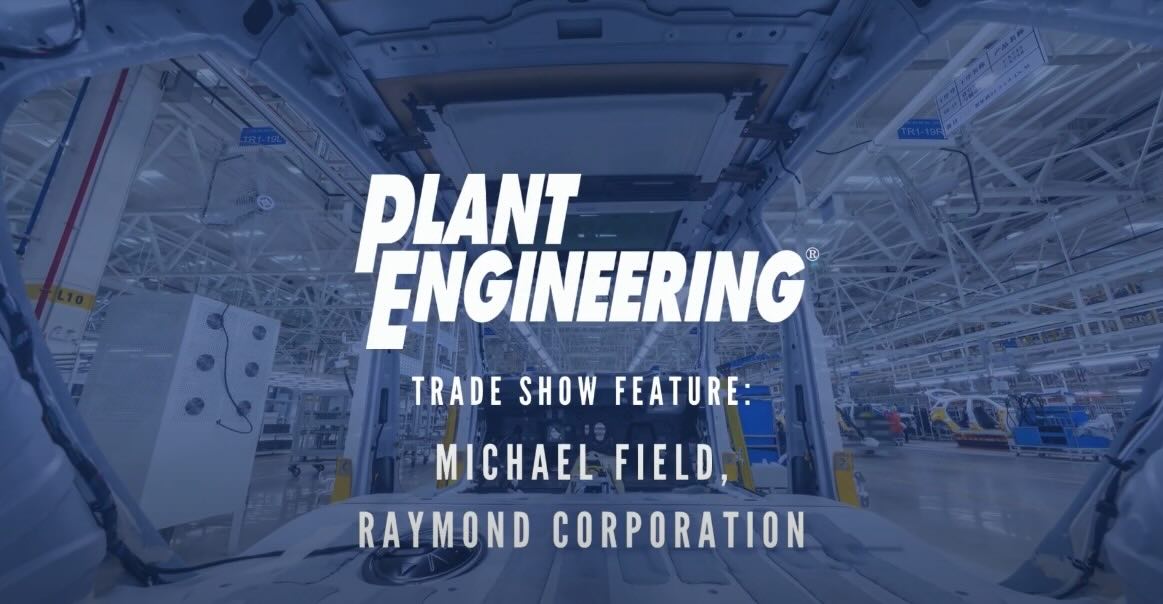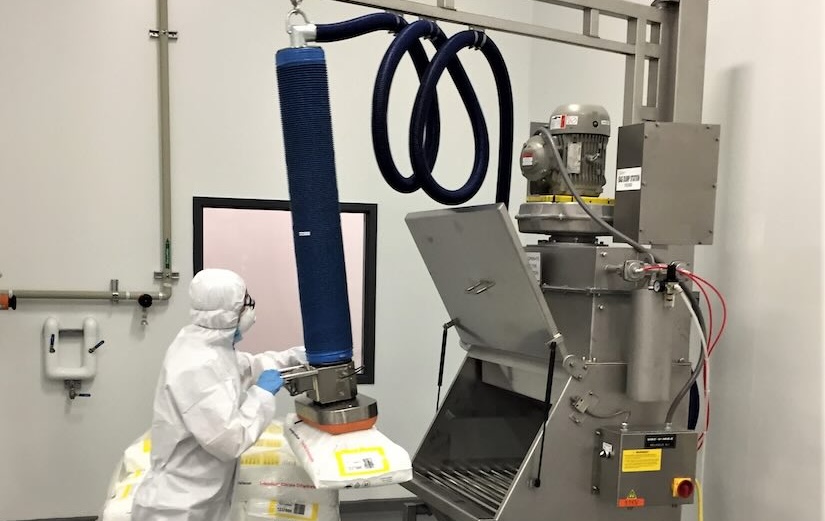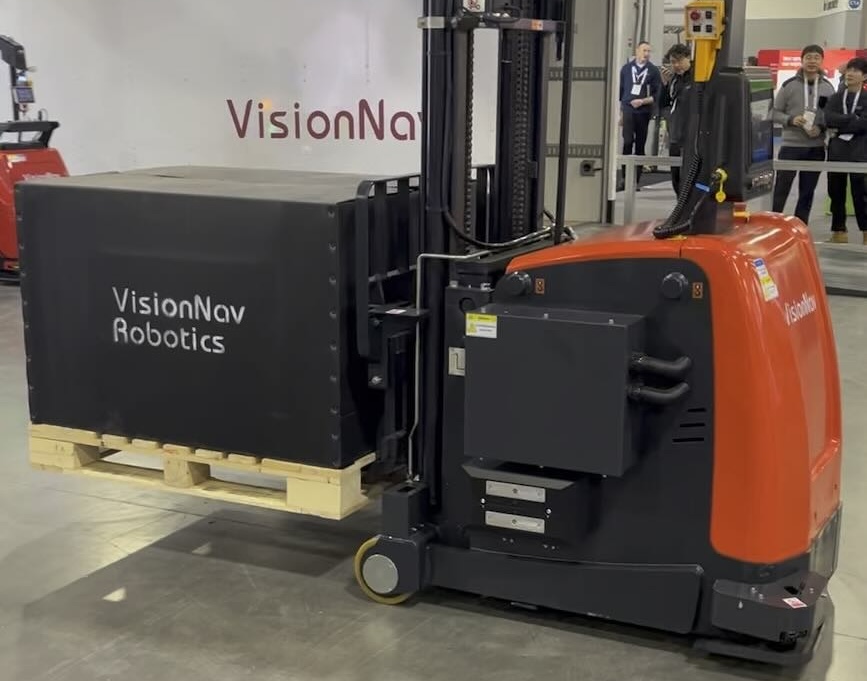Large structures such as manufacturing complexes and warehouses present unique design challenges when it comes to developing heating system concepts. These buildings not only cover large areas, but they tend to be high-bay structures and have the potential for many overhead doors at the perimeter. Fixed equipment such as machine tools and conveyors can get in the way of heat distribution systems.
Large structures such as manufacturing complexes and warehouses present unique design challenges when it comes to developing heating system concepts. These buildings not only cover large areas, but they tend to be high-bay structures and have the potential for many overhead doors at the perimeter.
Fixed equipment such as machine tools and conveyors can get in the way of heat distribution systems. Dirt, grime and fumes can complicate the operation as well as the ventilation aspects of proposed systems. Two of the most common approaches include the use of direct-fired pressurization units or the use of low-intensity infrared heaters coupled with exhaust fans.
Pressurization Units
Designed to move large quantities of air at low temperature differentials (usually 50F or less) to minimize temperature stratification, pressurization units are typically mounted on the roof of the facility or at grade on elevated supports to ensure that the supply air is delivered high. The high air delivery allows for a longer “throw” of the air, requiring less equipment to cover the required floor area. The most common fuel is natural gas; however, units can be converted to burn propane. Gas-fired air handling units can be categorized as either direct-fired of indirect-fired.
Indirect-fired units burn the fuel and air mixture inside of a heat exchanger while the air traveling to the space passes over the outside of the heat exchanger. In this design the products of combustion travel through a vent to the outside of the building. Direct-fired units utilize air that will be sent to the heated space for combustion without use of a heat exchanger. The products of combustion are mixed directly with large volumes of outdoor air.
One product of combustion in tight buildings is watervapor, which can lead to condensation in colder climates. With tight buildings it is best to consider the use of indirect-fired equipment. There are several common configurations. Make-up air units deliver a fixed amount of 100% outside air and supply large quantities of replacement air for facility exhaust systems. Such systems can include paint spray booths and other industrial exhaust applications. Another configuration is designed to re-circulate a fixed 80% of the indoor air while bringing in 20% outside air that passes over the burner. Often called an air rotation unit, it supplies minimum ventilation to spaces that do not require large quantities of outside air to maintain building pressurization.
An important category is a constant volume unit that varies the quantity of outside air from 100% to 20%. The burner requires a high turndown ratio and only outside air is drawn across the burner. The discharge air volume is fixed and the quantity of outside air is automatically adjusted to maintain building pressurization.
Variable volume units have a varying supply air volume with only outside air passing through the burner section. Recirculated air passes through a bypass section instead of through the facility. This is used where building pressurization is desired and where contaminants located in the space cannot be recirculated.
Facilities that have indoor vehicle operation are prone to the accumulation of carbon monoxide and associated noxious fumes. For such instances, a ventilation sequence can be instituted to limit this potentially harmful build-up. The pressurization units for these buildings could be fitted with a carbon monoxide detector with an initial set point that would trigger an alarm and energize a time delay relay. A second set point would initiate an alarm and eventually shut down the burner. The dampers would be positioned to enable the exhaust mode. After the carbon monoxide returns to a safe level, the sensor could reset the unit to normal operation.
In addition to emergency ventilation to purge carbon monoxide, the pressurization unit can provide ventilation during warm weather. A reverse acting thermostat modulates the outside air and returns air dampers to bring in more outside air to maintain the indoor set point. These units can be fitted with either chilled water or direct expansion cooling coils to provide tempered or conditioned air to the space during the warm weather.
Direct-fired pressurization units are approximately 92% efficient with much of the available energy in the burned natural gas being delivered as heat. The supply air stream absorbs the heat that would be normally lost through a flue or vent pipe as in the indirect-fired configuration.
This equipment keeps the building slightly pressurized, reducing the infiltration of cold air. When overhead doors are opened, the outside air dampers are modulated open to admit more air to maintain this pressure level.
Infrared Heat
Infrared is the transmission of energy by electromagnetic waves. They can be reflected and heat solid objects but not the air through which it travels. Infrared energy emitted from heaters warms floors and objects that in turn release heat to the air by convection. Re-radiation to surrounding objects also contributes to comfort in the area. Radiant heat can be turned off when not required and can quickly return a space to set point.
There are three categories of infrared radiant heating equipment: low-intensity has a source temperature of 300F to 1,200F; medium-intensity utilizes source temperatures of 1,200F to 1,800F; high-intensity has radiant source temperatures range between 1,800F and 5,000F.
The gas-fired, low-intensity infrared heater is most widely used in spaces such as warehouses and distribution hubs. In a custom installation, the design would take into account the height of the facility, building geometry, location of occupants, required heat density and tube spacing.
A gas-fired, low-intensity infrared heating system consists of a series of burners, combustion chambers, steel radiant tubing, and reflectors. The equipment is hung from the structure and is reflected toward the floor. Reflectors can be installed at various angles, depending on the building geometry. Combustion air also can be drawn directly from the outdoors. There are some limitations in using infrared heat due to the nature of this equipment. The following precautions for the application of infrared heaters is taken in part from the 2000 ASHRAE Systems and Equipment Handbook and should be considered before commencing with a facility design:
-
Infrared heaters have a high surface temperature and should not be used when the atmosphere contains ignitable dust, gases or vapors or when the atmosphere contains gases, vapors and dust that can decompose into hazardous or toxic materials in the presence of high temperature and air.
-
Manufacturers’ recommendations for clearance between a fixture and combustible material should be followed. Warning notices defining proper clearances should be posted near the fixture.
-
Manufacturers’ recommendations for clearance between a fixture and personnel areas should be followed to prevent personnel stress due to local overheating.
-
Adequate make-up air must be provided to replace the combustion air used by the heaters.
-
For comfort, personnel should be protected from substantial wind or drafts. Suitable windshields seem to be more effective than increased radiation density (Boyd 1960).
-
Comfort
A properly designed radiant heating system can provide excellent comfort to building occupants. This is especially true of large, high-bay structures where forced air systems permit stratification with warm air hovering at the roof and cold air pooling down at the occupants on the floor.
Since there can be many doors at the perimeter of a certain large structures, a radiant heating system would be less effective at the side of such a facility facing the prevailing winter winds. On the other hand, a pressurization system would work to force relatively warm air towards doors that are opened helping to keep the prevailing winds at bay.
As for stratification, pressurization systems work to overcome this tendency by moving very large quantities of air at temperature differentials as low as 50 F. Note that interior design temperatures of many of these facilities are kept low during the winter months with 55 F is not uncommon.
Ventilation
Direct-fired pressurization equipment can be configured to deliver plenty of ventilation to a facility. Infrared systems may need to be supplemented with a separate ventilation system. With certain classes of facilities, an infrared system would not require additional equipment for ventilation, as large structures with many doors would provide enough natural ventilation through leakage. The nature of certain facilities requires the installation of a substantial ventilation system due to the generation of odors, mists and fumes.
Maintenance
The items in the sidebar on equipment maintenance should be done on an annual basis and would require the use of a lift. If machines, conveyors or other equipment are in the way, then a special articulated lift may be required. There is controversy as to whether the infrared reflectors need to be cleaned on an annual basis as the ASHRAE handbook indicates, as many facility owners do not perform this cleaning and do not report adverse effects. It has been suggested that if the infrared heaters are mounted at least 20 feet above the floor, that they do not accumulate the type or amount of material that significantly degrades reflector performance.
Conclusions
Infrared radiant and gas-fired pressurization systems each offer good solutions to heating large industrial and warehouse facilities. Situations that require significant ventilation favor pressurization air handlers as do facilities that generate dust, mists and other contaminates. Cleaner environments with less intensive ventilation needs would do well to go with the infrared heating radiant approach. In very cold climates it might be beneficial to go with a hybrid solution using radiant heat at the perimeter as the primary heating source and placing pressurization units at the center of the facility for ventilation and for pressurization when doors are open.
The Bottom Line…
Pressurization units are designed to move large quantities of air at low temperature differentials. They can also be used for ventilation in warm weather.
There are three categories of infrared radiant heating equipment: low-intensity, medium-intensity and high-intensity.
Properly designed radiant heat systems offer comfort, but may not be effective in all types of buildings.
Hybrid solutions utilizing both infrared and gas-fired pressurization systems may be effective in some environments.
Examining the space you’re trying to heat for efficiency, effectiveness and worker comfort will help lead to a decision on whether infrared heating or gas-fired pressurization units might be more effective.
Maintaining heating systems
Having a strong maintenance plan for heating systems is a crucial part of its success. Here are some of the maintenance tips for both infrared heaters and gas-fired pressurization units:
Infrared heaters
Gas-fired infrared heaters require periodic cleaning to remove dust, dirt and soot.
Reflecting surfaces must be kept clean to remain efficient.
An annual cleaning of heat exchangers, radiating surfaces, burners and reflectors with compressed air is usually sufficient. Chemical cleaners must not leave a film on reflector surfaces
The main and pilot air ports should be kept free of lint and dust. (Source: 2000 ASHRAE Systems and Equipment Handbook)
Gas-fired pressurization units
Inspect overall condition of unit and cabinet
Replace filters
Clean unit interior
Inspect, adjust, and replace belts if required.
Inspect pulleys and alignment.
Lubricate supply fan motor. Check amp draw against nameplate data.
Lubricate blower bearings.
Inspect and clean blower as required. Check for loose or missing weights.
Inspect burner. Make sure all scale is removed from burner plates. Clean as required. Make sure all gas openings are free from blockage. Use correct size drill to open as required.
Clean pilot burner. Replace flame/spark rods if damaged.
Perform a complete operation check of burner: fail test all safeties; light burner and check manifold pressure; visually inspect flame; calibrate temperature control system.
NIST developing nanotechnology research center for product development
The National Institute of Standards and Technology will lead an effort to create more efficient nanotechnology manufacturing. Scientists from U.S. companies, universities and government will focus on overcoming major technical obstacles to cost-effective manufacturing of products made with components the size of atoms and molecules.
“The national Center for Nanoscale Science and Technology will help the private sector develop innovative products like more efficient batteries, lighter-weight and higher performing materials for aircraft and autos, and smaller computer chips to power digital devices,” said Commerce Secretary Carlos Gutierrez in announcing the program.
NIST’s new Center for Nanocale Science and Technology features a research staff that will blend many types of specialized expertise – physics and chemistry to mechanical engineering and computer science.
President Bush has proposed a $20 million increase in NIST funding under the American Competitiveness Initiative he announced at the 2006 State of the Union address.
CNST’s prime objective is to lay the technical groundwork necessary for U.S. industry to translate nanotechnology’s many anticipated offerings into practical realities-manufacturable, market-ready products. Hallmarks of NIST’s new center of excellence will be its twin focus on measurement and manufacturing at the nanoscale.
Grainger adds to product catalog
Grainger is adding more than 39,000 products to its new 2006 catalog launching April 3. The expansion brings the number of products offered through its catalog to more than 115,000. The expanded offering consists of some 30,000 different fasteners such as screws, bolts and nuts and an additional 10,000 products spread across diverse product categories including electrical, cleaning, material handling, plumbing and ventilation.
To celebrate the announcement the company commissioned a large fastener sculpture by well-known Chicago sculptor Erik Blome. The sculpture was on display this week National Manufacturing Week in Rosemont, IL.
“Our customers count on us to be a one-stop shop for a broad selection of maintenance repair and operating supplies, enabling them to efficiently manage their facilities,” said Michael Pulick, Grainger’s vice president of product management. “We had a clear opportunity to bolster our offering, especially in fasteners. Today we are excited to announce that we are poised to handle even more of our customers’ unplanned MRO needs.”



